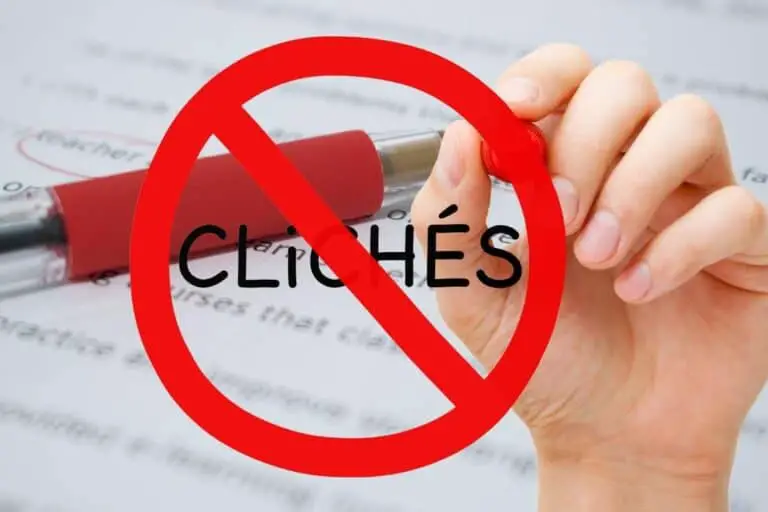Is Khan Academy a Scholarly Source? [Solved]
Khan Academy is a great resource for high school and college students, and they refer to it frequently. Some even use it as cited sources in their research papers and scholarly articles. But should Khan Academy be considered a scholarly source?
Khan Academy is considered a scholarly source because of its authority. They’ve gained such authority by gathering a significant amount of knowledgeable people in various fields.
Let’s have a detailed and deeper look at all the nuances that come into play for making this affirmation.

Is Khan Academy Considered a Reliable Source?
Khan Academy is considered a reliable source of information. Furthermore, not only is it reliable, but since 2015, the Khan Academy website has also been the official site for preparation for SAT.
The SAT test is an exam that measures a high school student’s preparedness to enter college as well as providing colleges with a tool to compare the level of all applicants.
Before moving on, we need to first know about the academy’s origin, how it operates and why it has such credibility.
What Is Khan Academy?
Khan Academy is an American non-profit organization whose main goal is to create and provide a set of online tools that students from anywhere in the world can use to improve their education. It was named after its founder, Salman “Sal” Khan, and was founded in 2008.
They do the following for free on their website:
- Produce lessons in the form of short videos
- Upload exercises and materials for educators
An interesting fact about Khan Academy: In 2018, they launched an app specifically created for children (ages two to six) called “Khan Academy Kids.” It was designed to help children learn basic math and language skills before they enter grade school.
The academy has both detractors and supporters, each with its own unique and exciting points of view. Let’s look at some of them:
Detractors
One of the organization’s weak points (at least to its critics) is that its founder (Sal Khan) doesn’t have a formal background or degree in pedagogy. Even some of the material from their videos in physics and mathematics has been deemed technically inaccurate.
Consequently, the academy made the necessary corrections to some videos and also gathered a network of over 200 content experts, thus expanding its faculty.
In his own defense, Khan admittedly recognized that their online lectures had some limitations. However, he explained that the academy’s goal is not to replace but rather to assist teachers in their efforts. They do this by taking some of the load off in online lectures. Thus, the teachers are left with extra time to tend to students’ individual needs.
Supporters
On the brighter side, Khan Academy has been recognized as the official SAT preparation website since 2015. In fact, students who spend 20 hours studying for the SAT using Khan Academy often receive up to a 115 point average score increase.
Also, they have been granted some important recognition: In 2012, Khan was named by TIME as one of the 100 most influential people for 2012.
In 2016, the academy received a Shorty Award in the Best in Education category.
What Is a Scholarly Source?
A scholarly (also known as academic) source is any information or content written by an expert in a specific field. This information will thus enhance the knowledge in this area by explaining new theories, findings, research, news, or insights.
Now that we know what a scholarly source is, it’s also important to know that it can be divided into two main categories: primary and secondary sources.
Source: University of Toronto Libraries
Primary Sources
Primary sources include the following:
- The original records stemming from the events when they happened
- Raw data
- The material that was produced by the people who witnessed or engaged in the activity being studied
Secondary Sources
Secondary sources refer mainly to the interpretations, discussions, and analysis of the events. They often come from the writings of people who weren’t actually there but knew about it from a different source.
Source: University of Toronto Scarborough Library
Next, we need to look at the parameters to determine a scholarly source and see where Khan Academy fits.
According to the site from the Illinois Library, there are five key aspects to look for:
- Content
- Audience
- Publishers
- Timeliness
- Authors
Let’s look at each one individually for better comprehension.
Content
- Are the conclusions based on the supplied evidence?
- What’s the length of the source?
- What’s the reason for providing this information?
- About the sources: Are they being cited?
- Are the claims made by this research documented?
- Does the content include tables, graphics, bibliographies, and charts?
Audience
- Is the intended audience of this source clearly defined?
- About the language used: Is it tailored to address a group of people with specific knowledge of a particular field, or is it accessible to the general public?
Publishers
- About the reason for publishing this information: Is it explicit?
- Who is responsible for publishing the information?
- When it comes to the publisher: Is it a professional organization, scholarly, or an academic institution?
Timeliness
- Can the date of publication be easily determined?
Authors
- When it comes to the credentials: Are they easily accessed? Are they genuinely relevant to the information produced?
- Are the authors’ names readily available?
The academy has a physical location; its headquarters are in Mountain View, California, USA). However, most activities happen online. Therefore, additional criteria must be applied. This means that their website needs to be analyzed as well.
Points To Verify About Their Website
- What kind of domain does the site have? Is it .gov, .edu, .org?
- Is it possible to find contact information? How about an email address, “About us” or “Contact us” links?
- When was the web page created and last updated?
- Is it possible to find information regarding the organization’s funding, history, and purpose that supports the website?
- Scrutinize the site’s content to determine if the facts and data presented are somehow biased, prejudiced, or distorted.
Source: Editage
Can You Use Khan Academy as a Source or Reference?
Khan Academy has enough credibility and authority to be used as a reliable source or reference. It has a .org domain site address, readily available contact information, and all the information on its site is presented without bias.
How to Cite Khan Academy Article APA
The APA (American Psychological Association) has a very specific format in which to cite articles. The Khan Academy website provides various examples of how to properly do this.
Here’s one:
Harris, Beth and Zucker, Steven. “A brief history of western culture, par. 1.” Khan Academy. Accessed January 24, 2017. https://www.khanacademy.org/humanities/ap-art-history /cultures-religions-ap-arthistory/a/a-brief-history-of-western-culture.
Source: Khan Academy
Final Thoughts
The academy has a pool of over 200 experts who contribute to producing and creating videos primarily aimed at primary and secondary school students, in different fields like:
- Mathematics
- Biology
- Physics
- Economics
- Computer Science
- Finance
- History
Their website (with a .org domain) has not only an “About Us” section but a rather large section (170+ persons) with a complete profile.
Another section of the site provides an extensive list of sponsoring companies, ranking them according to their donated amount. Their intended audience is clearly defined, as well.
It is safe to say that Khan Academy is a scholarly source.
Recommended Reading:






